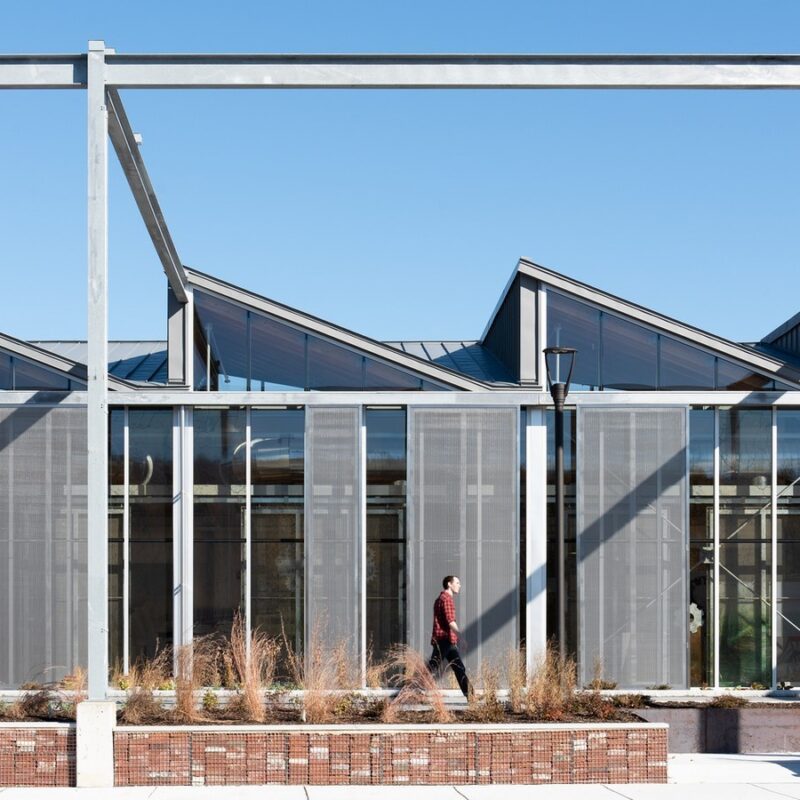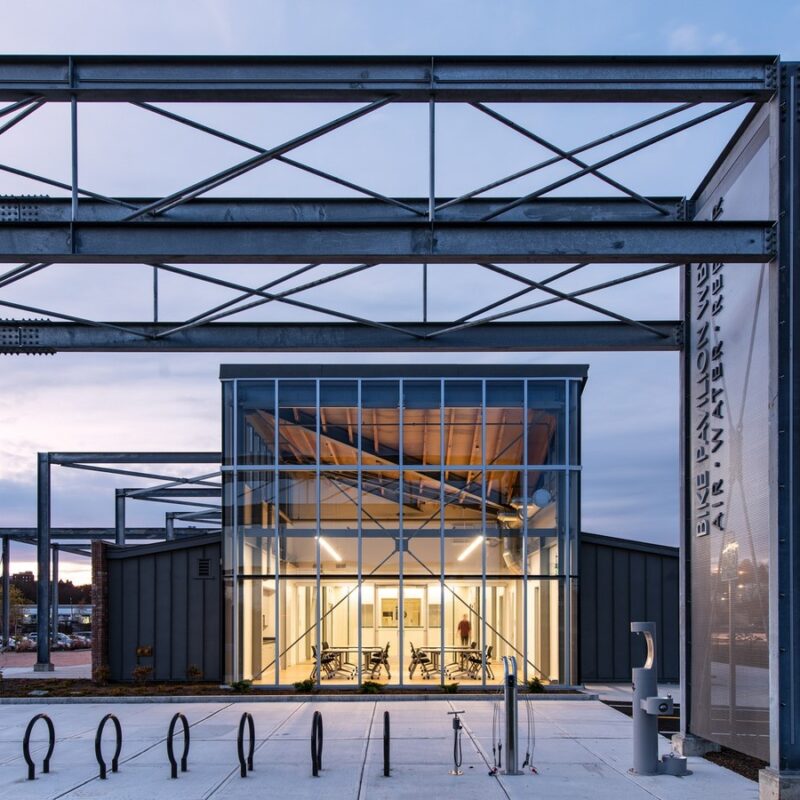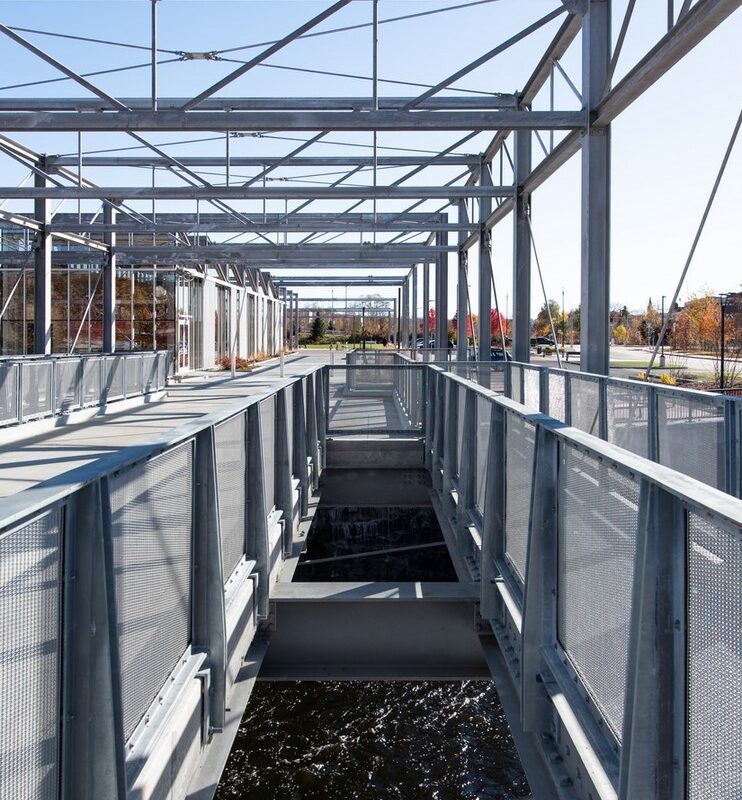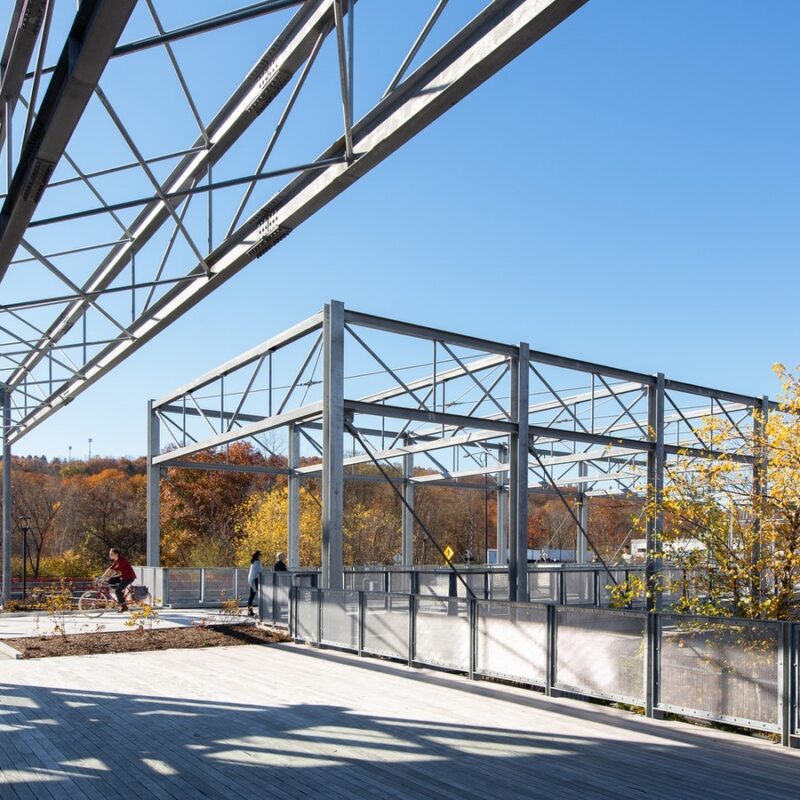Context and Purpose
The Worcester Blackstone Visitor Center, crafted by designLAB architects, stands as a testament to the rich industrial history of its location. Situated on a former industrial complex, this center is not just a building but a narrative woven through form and materials, recounting tales of generations past.

Design Elements
- Visitor Center Building: An 11,000 square foot structure housing an exhibit hall, flexible classroom, and office space.
- Festival Lawn: A sprawling grassy area at the southern end of the site, inviting community gatherings and events.
- Pedestrian Bridge: Connecting the visitor center building and festival lawn, spanning the Blackstone River.
- Events Pavilion: A hardscaped zone at the northern edge, enhanced by a solar array that serves both functional and aesthetic purposes.
- Heritage Walk: A pedestrian and bike path adorned with interpretive exhibits, linking the festival lawn, building, bridge, and events pavilion.
Reflecting Industrial Heritage
The architectural narrative pays homage to the site’s past, particularly its association with the Washburn & Moen Manufacturing Company. Steel and wire details echo the industrial era, while reclaimed wood and bricks sourced locally infuse authenticity into the design.

Sustainable Design and Remediation
Beyond aesthetics, the project prioritizes sustainability, remediating the brownfield site from industrial damage. Sustainable materials, plantings, and building systems rejuvenate the land, fostering a harmonious relationship between the built environment and nature.
Community Engagement and Healing

The Visitor Center becomes more than a structure; it becomes a catalyst for community healing and storytelling. It provides a space for the Quinsigamond Village community to gather, share stories, and reclaim their heritage amidst the remnants of America’s Industrial Revolution.
Conclusion: A Living Chronicle
In its essence, the Worcester Blackstone Visitor Center transcends mere architecture. It is a living chronicle that honors the past, embraces sustainability, and fosters community resilience. As visitors traverse its spaces, they embark on a journey through time, bridging the industrial legacy with a sustainable future while allowing the community to script its narrative anew.




































